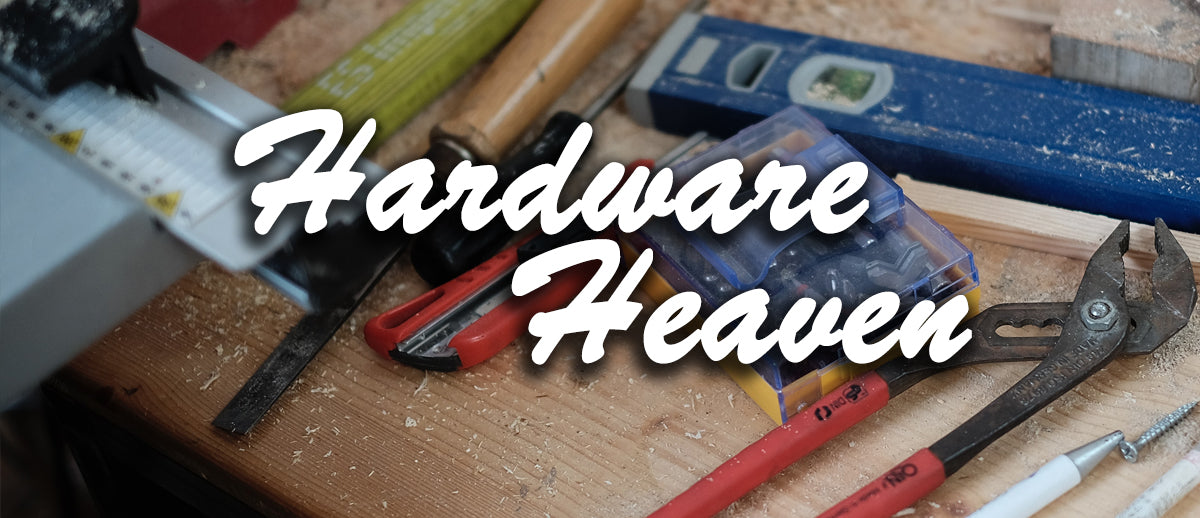To open our Hardware Blog, "Hardware Heaven" let’s look at how to make the most of our sheds, garages and workshops by creating a Shadow Board

A shadow board for your tools is a practical solution to ensuring all your tools are in the same place every time you reach for them. The shadow board can be quickly scanned to identify any missing tools - saving time and frustration!
Instructions are provided below on how to make a shadow board using a piece or pieces of Plywood. Plywood is strong, relatively easy to get a hold off, and will allow you to draw on it and insert hanging/fixing points for each tool, wherever you feel it should go.
Step 1 - Look at the available space on your wall, and consider how you will fix the new board.
- Will it lie flat against the wall?
- Would it be best to have it on a hinge plate, so you can use both side, and or swing it around to better suit your space.
Step 2 - Once you have considered a location, look at your tools.
- Decide what you use most regularly
- What should be within easy reach.
- What can be left in your tool bags, chest or drawers.
Once these things are decided, we can begin. Naturally... you may wish to buy more tools to fill your board with ...? And we can help you with that!
Step 3 - Prepare your board.
- Cut it down to the correct size (If required)
- Smooth off the edges and corners with sandpaper or a sanding block
- Lay the new piece of board on your workbench, trestles, or floor, ensuring you have enough space to work around it easily
Step 4 - Lay your selected tools across the board to create your plan.
Things to consider:
- Keep tools used most often nearest to your work space
- Try to ensure no more than a single step is required to pick the tool
- Each tool will need a little space around it to allow you to pick it
- The board will be stood upright once complete, gravity will pull your tools to the floor pretty quickly if they are not fixed correctly

Step 5 - Once you are happy with the layout draw around each tool with a Sharpie or Permanent marker.
Step 6 - Now you can apply the fixings!
- Use nails, screws or brackets to your liking and suitability to the task.
- Ensure the tool will be held snuggly when the board is lifted.
Step 6 - So, you have your outlines, you have your fixings… now complete the “shadow” by colouring in the outlined tool shape.
- Ensure the board is free of dust and dirt, give it a wipe with a damp cloth and allow to dry.
- Use a Sharpie/Permanent marker… or a paint brush and paint to fill the shapes
- If you are sharing the board with a colleague, maybe identify the tool position with a label inside the shadow.
Step 7 - Now hang your shadow board.
- Depending on the material you are fixing too
- Pre-drill your board and mitre so your fixings lie flush
- If your are fixing to stud work, ensure your holes line up with the wall studs
- If your are mounting on brickwork, offer the board up to the wall (without the tools attached) and mark the wall for drilling
- Insert suitable Metal- or Plastic-Plugs into the holes and screw through your board into the awaiting plastic plugs.
Step 8 - Place your tools onto the board in the identified locations.
Lastly - Pour a mug of Tea, Coffee or beverage of your choice... relax and appreciate your work!



